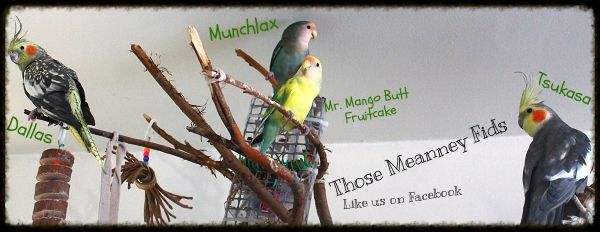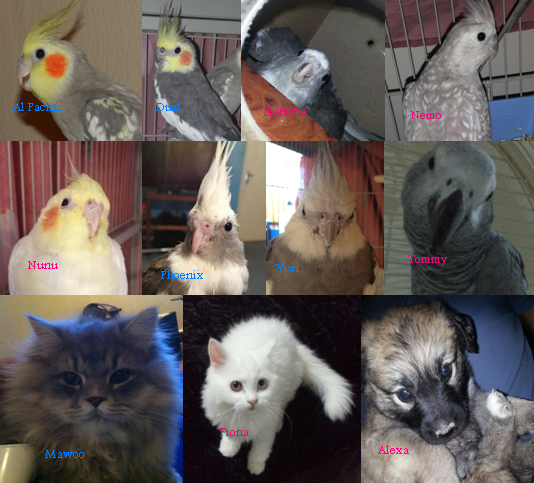Post by Casey on May 13, 2012 10:38:03 GMT -8
All birds lose feathers to grow new ones. They usually molt once or twice a year, but in captivity they are known to molt almost continuously. This is normal, though they still do stick with the once or twice a year pattern. Generally these are very heavy molts.
Cockatiels usually molt a big molt around 6 months old, this is when they normally lose their baby feathers and get their adult feathers. In most cases, this is when you can find out the gender of your cockatiel. Some cockatiels will molt before 6 months old and some may not molt until a year old. It can be an individual thing.
Lovebirds start their first molt around 4-6 months old. This will be when they start getting their adult colours and their plumage becomes brighter. Some may start molting earlier or later.
Budgies have their first molt around 3 months old and they lose the baby bars on their faces and start looking more like an adult. They may molt again before a year old.
When molting, birds get blood feathers, which is a new growing feather. Each blood feather has its own blood source to provide nutrients to the new feather and allow it to grow. As the feather grows the blood supply recedes back. If the feather is broken before the feather is done growing, the bird can bleed to death if the feather is not removed. These blood feathers are generally found on the tail and wing. Body feathers go through this same process, but are more commonly called pin feathers.
Birds molting need extra vitamin A and protein. Good food to feed to birds that are molting are egg, rosemary, and carrots. If birds are eating pellets, do not offer egg. Veggies high in vitamin A are excellent for molting birds.
Cockatiels usually molt a big molt around 6 months old, this is when they normally lose their baby feathers and get their adult feathers. In most cases, this is when you can find out the gender of your cockatiel. Some cockatiels will molt before 6 months old and some may not molt until a year old. It can be an individual thing.
Lovebirds start their first molt around 4-6 months old. This will be when they start getting their adult colours and their plumage becomes brighter. Some may start molting earlier or later.
Budgies have their first molt around 3 months old and they lose the baby bars on their faces and start looking more like an adult. They may molt again before a year old.
When molting, birds get blood feathers, which is a new growing feather. Each blood feather has its own blood source to provide nutrients to the new feather and allow it to grow. As the feather grows the blood supply recedes back. If the feather is broken before the feather is done growing, the bird can bleed to death if the feather is not removed. These blood feathers are generally found on the tail and wing. Body feathers go through this same process, but are more commonly called pin feathers.
Birds molting need extra vitamin A and protein. Good food to feed to birds that are molting are egg, rosemary, and carrots. If birds are eating pellets, do not offer egg. Veggies high in vitamin A are excellent for molting birds.




